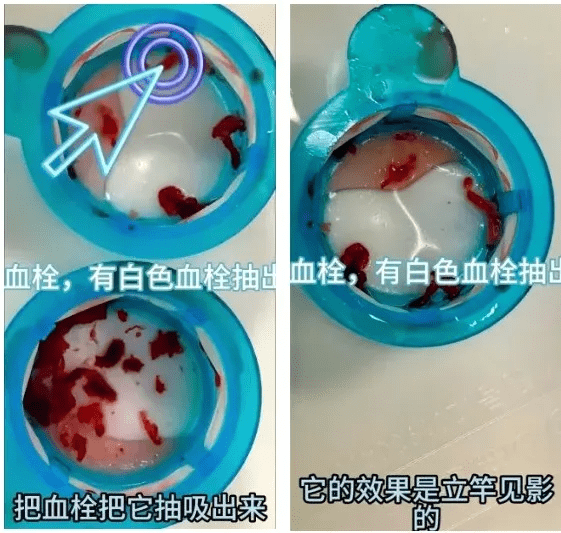Regular patient satisfaction surveys reveal that most patients highly commend our efficient and accurate diagnostic services, noting the demeanor of our staff, which eased their anxiety and boosted confidence in subsequent treatments.
Recently, thanks to the collaborative efforts of the Minimally Invasive Interventional, Imaging, and Anesthesiology departments at Guangzhou Royal Li Cancer Hospital, an 83-year-old patient underwent successful percutaneous sacral tumor biopsy, bilateral pulmonary artery angiography and thrombectomy, and inferior vena cava angiography and filter implantation. Following the procedures, the patient's dyspnea and lower limb pain were significantly alleviated.
Aunt Qi (a pseudonym) underwent four years of close follow-up after discovering a lung nodule in 2021. A follow-up examination at the end of 2024 showed progression of the lesion, and a PET-CT scan suggested the risk of multi-system involvement.
Faced with the complex condition, the family went to several tertiary hospitals in Xinjiang and Guangzhou for consultation. However, due to Aunt Qi's advanced age, declining physical functions, and multiple underlying diseases, the conventional puncture biopsy plan was repeatedly evaluated as high-risk and the biopsy was refused.
Challenging advanced age, precise puncture breaks the dilemma
It was not until February 2025 that Aunt Qi and her family came to Guangzhou Royal Li Cancer Hospital to seek treatment from Chief Physician Huang Deliang of minimally invasive interventional medicine.
After hearing Chief Physician Huang Deliang say, "We can do it!", the family felt relieved and the situation finally turned around.
However, the medical team faced a difficult hurdle. Aunt Qi's advanced age, combined with pre-existing conditions such as hypertension and lacunar infarction, posed significant risks to the surgery.
The Minimally Invasive Intervention Department immediately conducted preoperative discussions, read films and held consultations multiple times, and developed a detailed surgical treatment plan and emergency plan. On February 24, Huang Deliang, technical director of the Minimally Invasive Intervention Department, successfully performed a "percutaneous sacral tumor puncture biopsy" under CT guidance and removed pathological specimens. The entire operation took only 30 minutes and the process was very smooth.
Multidisciplinary collaboration to resolve the pulmonary embolism crisis
The following month, Aunt Qi developed symptoms such as dizziness, chest tightness, and difficulty breathing, and came to Guangzhou Royal Li Cancer Hospital again for treatment.
Chief Physician Huang Deliang led the team to quickly discuss the case and invited experts from the Department of Anesthesiology and Radiology to conduct a consultation and evaluation. The experts jointly developed a comprehensive, accurate, and standardized individualized diagnosis and treatment plan, deciding to perform "bilateral pulmonary artery angiography and thrombectomy; inferior vena cava angiography and filter implantation" on Aunt Qi.
On April 14, Chief Physician Huang Deliang delivered the catheter to the pulmonary artery under the guidance of DSA, confirmed the location of the thrombus after angiography, used the catheter to stir and break up the thrombus, and then inserted the thrombus extraction catheter. The external syringe repeatedly aspirated with negative pressure until another angiography showed that the thrombus had disappeared and the pulmonary artery branches were well filled.


Subsequently, an inferior vena cava angiography and filter implantation procedure are performed . Through precise positioning, a dilating sheath is introduced, creating a safe passage for the filter delivery system. The filter is then pushed to the target area and released, acting like a "safety net" to intercept newly formed blood clots in the lower extremities.

The difficulty of the operation is reflected in the elderly patients with complex vascular conditions: weak cardiac load capacity requires precise heart rate control during surgery, and high vascular fragility increases operational risks. Experts from the Department of Anesthesiology, Imaging, and Cardiology provide escort throughout the process.
He was able to get out of bed the next day, and his long-distance search for medical treatment finally paid off.
"Look at me talking so much in one breath, are you out of breath?" Aunt Qi asked with childlike pride after recounting her medical experience. Her daughter, beside her, smiled and continued, "Oh, have you forgotten yesterday? I was pushing your wheelchair, and you couldn't even breathe." Then, Aunt Qi lifted her right leg and placed it on the bed, deliberately demonstrating her flexibility.
The day after the surgery, Aunt Qi was able to walk independently, saying, "The heavy weight in my chest is gone, and my legs don't hurt anymore." She joked with her daughter, looking relaxed. The 4,000-kilometer journey from Urumqi to Guangzhou to seek medical treatment finally yielded a positive result, a testament to Aunt Qi's family's perseverance and the commitment of doctors.

Know more about technology
Embolectomy combined with filter implantation can effectively remove thrombi under minimally invasive conditions, reducing the thrombus burden in the pulmonary vessels and avoiding the high bleeding risk of large-dose thrombolysis. It also rapidly opens the embolic pulmonary artery, improving symptoms such as dyspnea, eliminating the risk of sudden death, and saving patients' lives. This not only addresses the high risk of fatal large thrombi, but also provides a strong safeguard against further pulmonary embolism caused by dislodged thrombi in the lower extremities.
Regular patient satisfaction surveys reveal that most patients highly commend our efficient and accurate diagnostic services, noting the demeanor of our staff, which eased their anxiety and boosted confidence in subsequent treatments.
Monthly patient satisfaction surveys show that patients highly rate our outpatient services, praising the smooth process, professionalism and patience of our staff, and expressing great satisfaction with the clinic environment.
Inpatient satisfaction surveys reveal patients are very pleased with our services, noting skilled and caring staff, as well as a comfortable environment that provides strong support for their recovery.